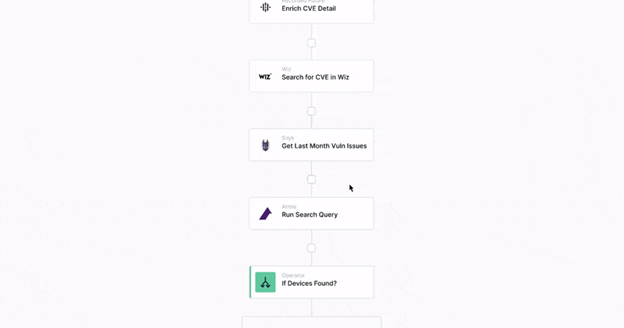Photo Gallery
 |
 |
Torq's Parallel Execution


Additional Info
| Company | Torq |
| Company size | 100 - 499 employees |
| World Region | North America |
| Website | torq.io |
NOMINATION HIGHLIGHTS
Torq launched Parallel Execution in September 2022, which represents a significant evolution for no-code security automation that enables security professionals to execute more tasks simultaneously and quickly enrich, analyze, contain, and resolve security threats.
Parallel Execution instantly creates multiple branches within an automatic workflow to handle each security task concurrently before seamlessly merging back into a single flow in public, private, or hybrid clouds.
This functionality can exponentially speed up tasks like threat intelligence enrichment, enabling users to check multiple sources at once. Before, if a user wanted to accomplish this process in an older SOAR platform, it would require hours of engineering digging into code or defining the minutiae of complex deduplications for each case.
This video shows how it works: https://youtu.be/Mf-aT94VA1s
Security teams, regardless of industry, that adopt Parallel Execution benefit from security events being processed (enriched, classified, detected as false-positive, prioritized when true positive) 10 times faster. These teams need more agile and responsive tools that allow them to operate in realistic conditions, which sometimes involve as many as 1,000 simultaneous events.
Parallel Execution is just one example of how Torq is innovating security automation, whose tools, up until now, have been asynchronous and inept at handling urgent escalations and different service level requirements.
How we are different
1. Parallel Execution allows security teams to focus on actual security responses without sacrificing precious time and resources to develop the workflows that deliver them.
2. Dozens of Torq customers and counting, including those from the world’s largest Fortune 100 companies, have adopted Parallel Execution since it launched.
3. With Parallel Execution, Torq delivers on the promise of true no-code parallel computing, to provide easier workflow design, adaptable iterating, and more powerful execution, which security teams have long been asking for.

Vote by Sharing
- Like
- Digg
- Tumblr
- VKontakte
- Buffer
- Love This
- Odnoklassniki
- Meneame
- Blogger
- Amazon
- Yahoo Mail
- Gmail
- AOL
- Newsvine
- HackerNews
- Evernote
- MySpace
- Mail.ru
- Viadeo
- Line
- Comments
- SMS
- Viber
- Telegram
- Subscribe
- Facebook Messenger
- Kakao
- LiveJournal
- Yammer
- Edgar
- Fintel
- Mix
- Instapaper
- Copy Link
Each completed social share counts as a vote for this award nomination.



